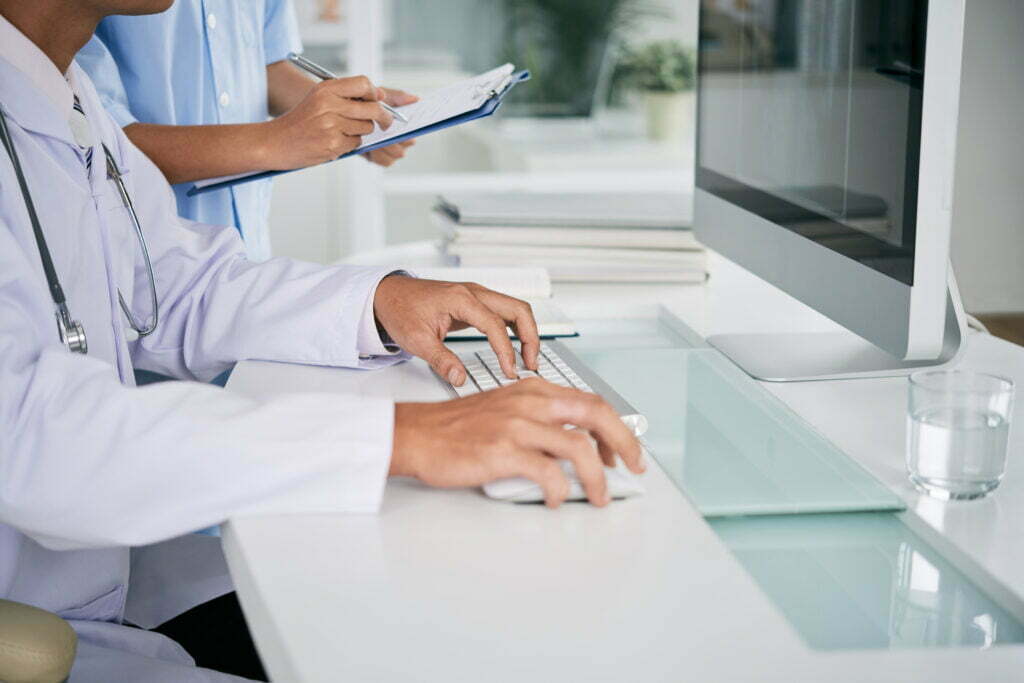The popularity and pervasiveness of health technologies is driving up the production of patient-generated health data (PGHD). Wearable sensors, smartphone apps, web portals, and home monitoring devices enable people to collect more data about their general or specific health, increasing the possibility for PGHD to be beneficial for healthcare practitioners in remote patient monitoring (RPM) interventions.
What is Patient-generated Health Data (PGHD)?
Any health-related data generated by a patient, such as biometric data, symptoms, lifestyle choices, and treatment history, is considered patient-provided health data (PGHD). These data differ from health data collected in clinical settings in two ways: people, not healthcare practitioners, are in charge of collecting the data, and patients can choose how and with whom they share the data.
The following are key features of PGHD: (1) the data is gathered by the patient rather than the healthcare practitioner; (2) the data is obtained outside of clinical settings; and (3) the data is both longitudinal and capable of being collected at high-frequency intervals.
The Importance of PGHD in Improving Health Outcomes
There are published evidence of the potential merits that PGHD from RPM bring to individualizing clinical care.
- Reduces hospital re-admission and clinical visits: Patients are less likely to end up in the hospital when they have access to health data and are connected to their care providers. As a result, insurers are also entering the RPM market. RPM is more than simply a good way to cut readmissions. It can also assist improve health outcomes for chronically ill people — nearly six out of ten people in the United States — by allowing their doctors to better support, educate, and monitor them. Healthcare expenses related with unnecessary office visits and hospitalizations may be reduced when patients exchange PGHD, allowing the doctor to manage illnesses and prevent consequences proactively.
- Facilitates timely advice: If data is seen and shared by care teams in a timely manner, patient-generated health data (PGHD) obtained through mobile apps and devices represents a possibility for remote patient monitoring and fast or early interventions to prevent acute exacerbations of chronic illness. Sensors in smart watch, for instance, gather biometric data and transmit it continuously to their care providers in real-time.
- Supplements clinical data captured in in-patient care: Patients who previously faced hurdles to healthcare due to cost or distance may now exchange health information with doctors more readily, timely and economically as mobile device ownership spreads across varied groups.
- Delivers a more comprehensive picture of a patient’s status: On a policy level, digital PGHD may improve healthcare quality by increasing the kind, quantity, and accuracy of health information transmitted between patients and clinicians. Next-generation RPM produces a holistic picture of patient’s health conditions utilizing AI and machine learning technology.
- Supports more personalized treatment planning: Patient-generated data is becoming more widespread in the management of chronic diseases. Smartphone apps and wearable sensors make it easier for people to collect health information. However, current commercial systems frequently fail to properly support patients and clinicians in data collaboration. Chronic illness care is shifting from clinical to home care and RPM in order to better address individual health concerns and coordinate long-term care planning, with a greater emphasis on, use of, and even dependence on patient-generated data. These data have the potential to supplement established clinical assessments with rich, everyday health behavior data.
Stages of PGHD Management
PGHD management is frequently outsourced to medical devices and wearable manufacturers, and it consists of three stages: (1) data collection, (2) data processing, and (3) information utilization for clinical decision making.
PGHD collection has two methods: Automatic sensor recording and manual measurements by a patient. Using a smart watch for instance, data such as heart rate, SpO2, respiratory rate, and body temperature are transmitted to the doctor’s dashboard automatically during some time intervals. As for manual measurements, patients are advised by their care providers to collect their vital signs from their medical devices. Next-Generation RPM like DrKumo helps patients collect data easily through Autopilot mode— a special feature that assist patients to take measurements easily.
Choosing Reliable RPM Vendor
Healthcare professionals addressed data accuracy at the point of data collection, which may be influenced by the design or functionality of the wearable device, as well as human error during manual data entry.
The most ideal remote patient monitoring technology is the one that produces continuous and real-time access to PGHD. This would have a significant impact on multiple aspects of health and well-being by lowering avoidable costs and assisting patients and providers in managing chronic diseases and the aftermath of acute care episodes, all while contributing to improved patient safety and satisfaction.
It is also very important to consider PGHD’s security and confidentiality. Choose an RPM vendor which is HIPAA compliant. The easy-of-use of medical devices is also vital in patient’s active participation in managing his own health. Finally, the RPM solution should have the capability to produce holistic picture of patient health.
RELATED: The Value and Importance of Health Data Confidentiality, Privacy and Security
Takeaway
Increased PGHD production as a result of the spread of health wearables and sensors is becoming an integral aspect of personalizing patient-centered treatment and may contribute significantly to precise data collection for timely medical intervention. PGHD can be used to supplement in-patient clinical data gathering and provide a more comprehensive picture of a patient’s status by identifying environmental and behavioral elements that influence a patient’s individual health condition.









